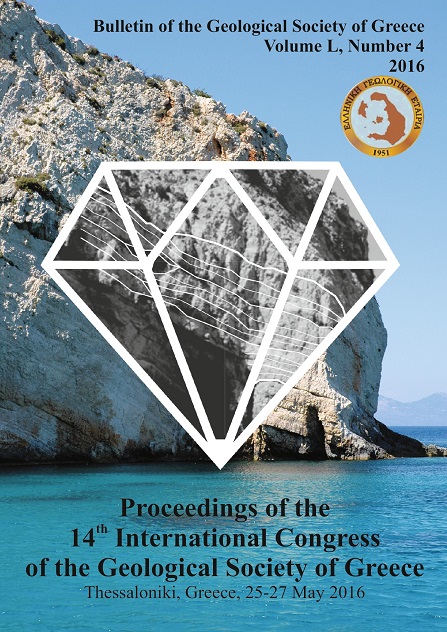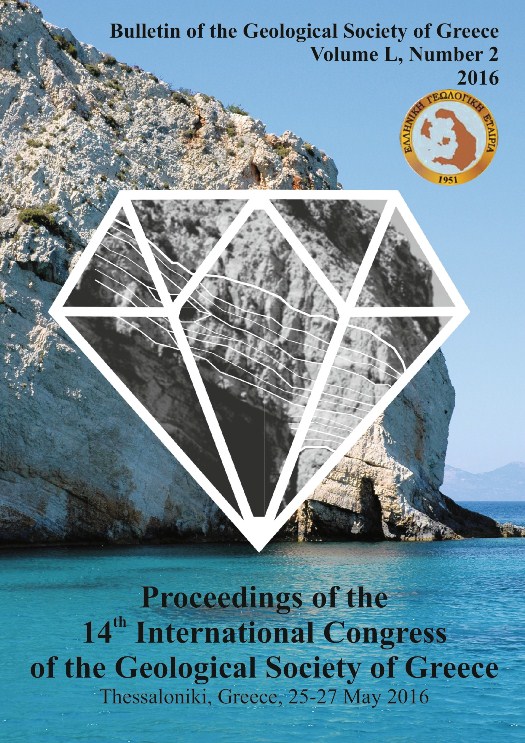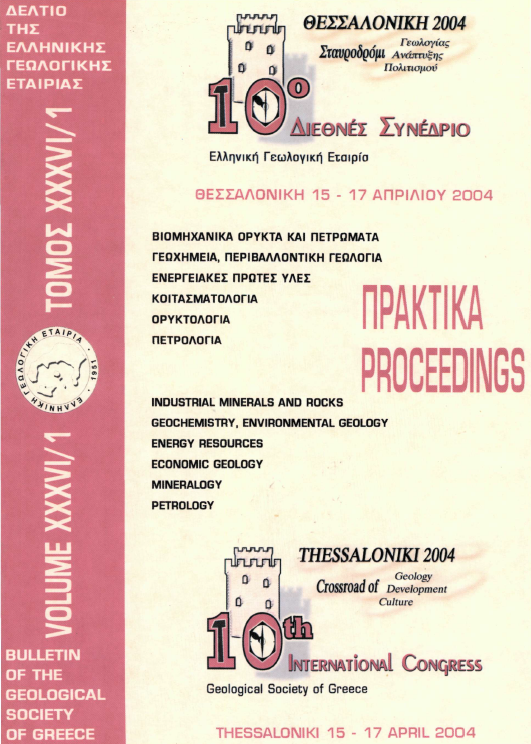MINERALOGICAL AND GEOCHEMICAL CHARACTERIZATION OF THE OLYMPIAS MINE TAILINGS, NE CHALKIDIKI, GREECE
Résumé
The Olympias tailings of NE Chalkidiki, Greece represent the mine wastes produced by the beneficiation of the Pb-Zn-Au-Ag ore deposit, which is hosted within the carbonate rocks of the Kerdylia Unit. In the present study X-Ray diffraction (XRD), scanning electron microscopy (SEM), optical microscopy, chemical analyses and pH measurements were conducted to determine the tailings mineralogy and chemical composition. The results indicated that they consist of gangue (quartz, rhodochrosite, calcite, dolomite, feldspars, micas, kaolinite and actinolite) and sulfide minerals (pyrite, arsenopyrite, sphalerite, chalcopyrite and galena), reflecting the source ore and its host rock composition, accompanied by traces of Fe-oxides (magnetite, hematite), Fe oxyhydroxides (goethite) and Mn-oxides, often enriched in Zn and Pb and in some cases Fe, Sb and As. Secondary sulfates (gypsum, jarosite) and surface efflorescent salts (ferrohexahydrite, hexahydrite, halotrichite) have also been recognized. The Olympias tailings are generally unoxidized, generating an alkaline environment. However, variations in composition result in the formation of restricted separate phases, such as thin layers and lenses of oxidized material that generates an acidic environment. In terms of precious metals content, the Olympias tailings are enriched in Au (up to 12 g/t) and Ag (up to 20 g/t).
Article Details
- Comment citer
-
Zaimis, S., Vavelidis, M., Alifragkis, D., Melfos, V., Kantiranis, N., Daftsis, E., & Gazea, E. (2016). MINERALOGICAL AND GEOCHEMICAL CHARACTERIZATION OF THE OLYMPIAS MINE TAILINGS, NE CHALKIDIKI, GREECE. Bulletin of the Geological Society of Greece, 50(4), 2088–2097. https://doi.org/10.12681/bgsg.14260
- Rubrique
- Petrology and Mineralogy

Ce travail est disponible sous licence Creative Commons Attribution - Pas d’Utilisation Commerciale 4.0 International.
Authors who publish with this journal agree to the following terms:
Authors retain copyright and grant the journal right of first publication with the work simultaneously licensed under a Creative Commons Attribution Non-Commercial License that allows others to share the work with an acknowledgement of the work's authorship and initial publication in this journal.
Authors are able to enter into separate, additional contractual arrangements for the non-exclusive distribution of the journal's published version of the work (e.g. post it to an institutional repository or publish it in a book), with an acknowledgement of its initial publication in this journal. Authors are permitted and encouraged to post their work online (preferably in institutional repositories or on their website) prior to and during the submission process, as it can lead to productive exchanges, as well as earlier and greater citation of published work.






